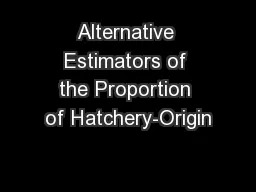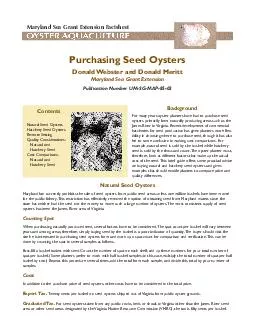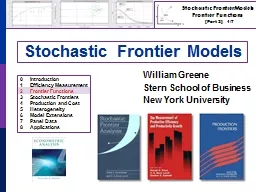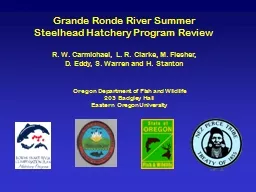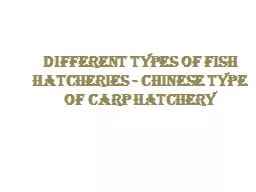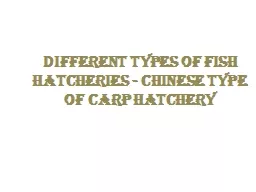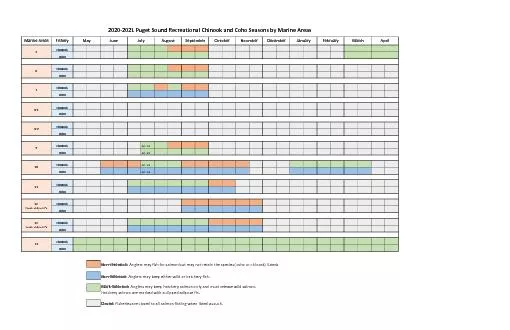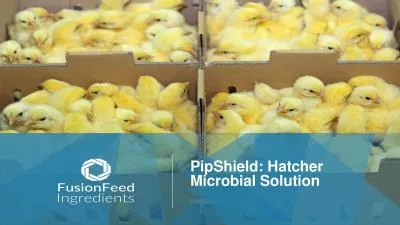PPT-Alternative Estimators of the Proportion of Hatchery-Origin
Author : lindy-dunigan | Published Date : 2016-05-03
Spawners by Richard Hinrichsen Rishi Sharma Tim Fisher wwwonefishtwofishnet Why Estimate HatcheryOrigin Spawners These fish originate in hatchery are released
Presentation Embed Code
Download Presentation
Download Presentation The PPT/PDF document "Alternative Estimators of the Proportion..." is the property of its rightful owner. Permission is granted to download and print the materials on this website for personal, non-commercial use only, and to display it on your personal computer provided you do not modify the materials and that you retain all copyright notices contained in the materials. By downloading content from our website, you accept the terms of this agreement.
Alternative Estimators of the Proportion of Hatchery-Origin: Transcript
Download Rules Of Document
"Alternative Estimators of the Proportion of Hatchery-Origin"The content belongs to its owner. You may download and print it for personal use, without modification, and keep all copyright notices. By downloading, you agree to these terms.
Related Documents

